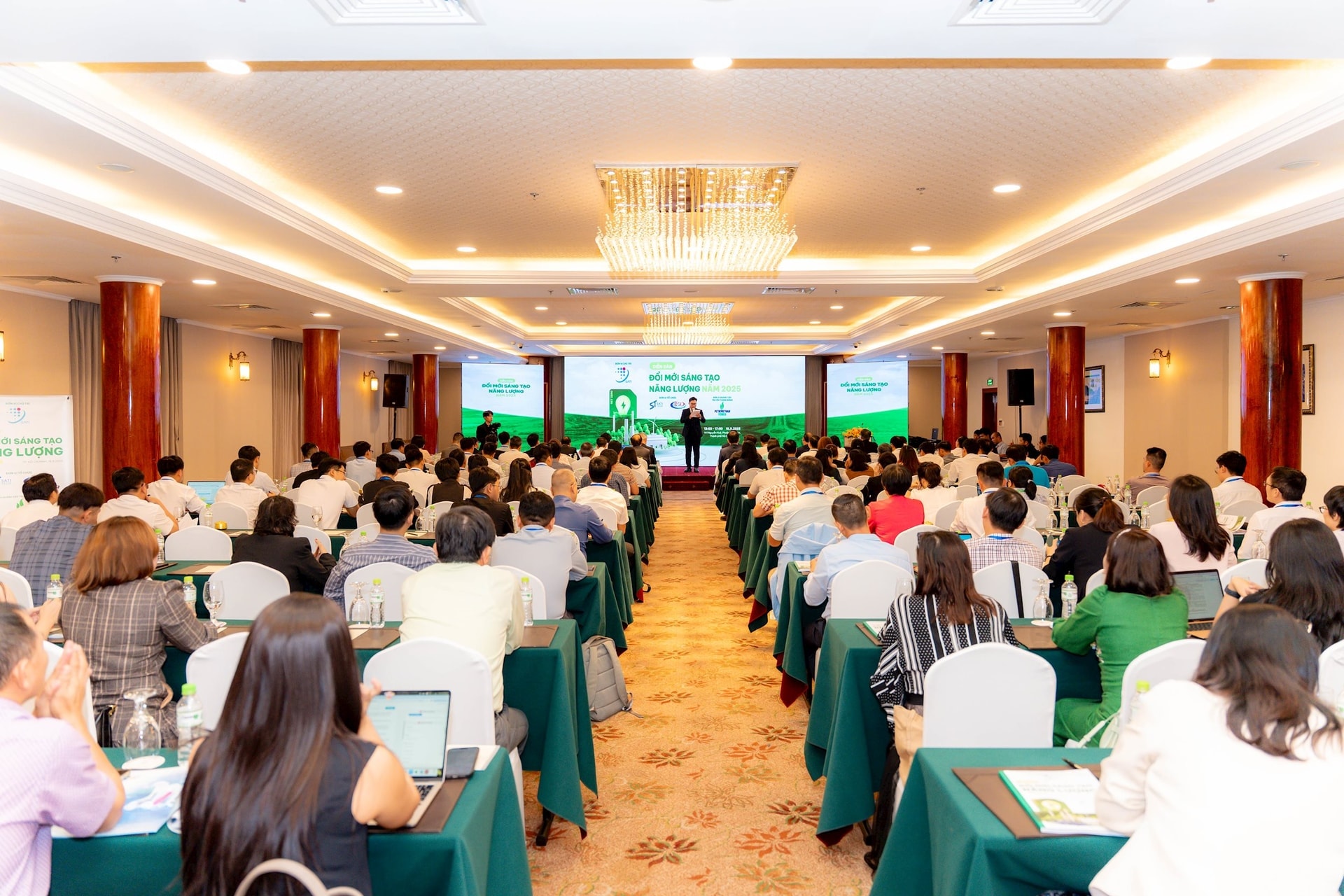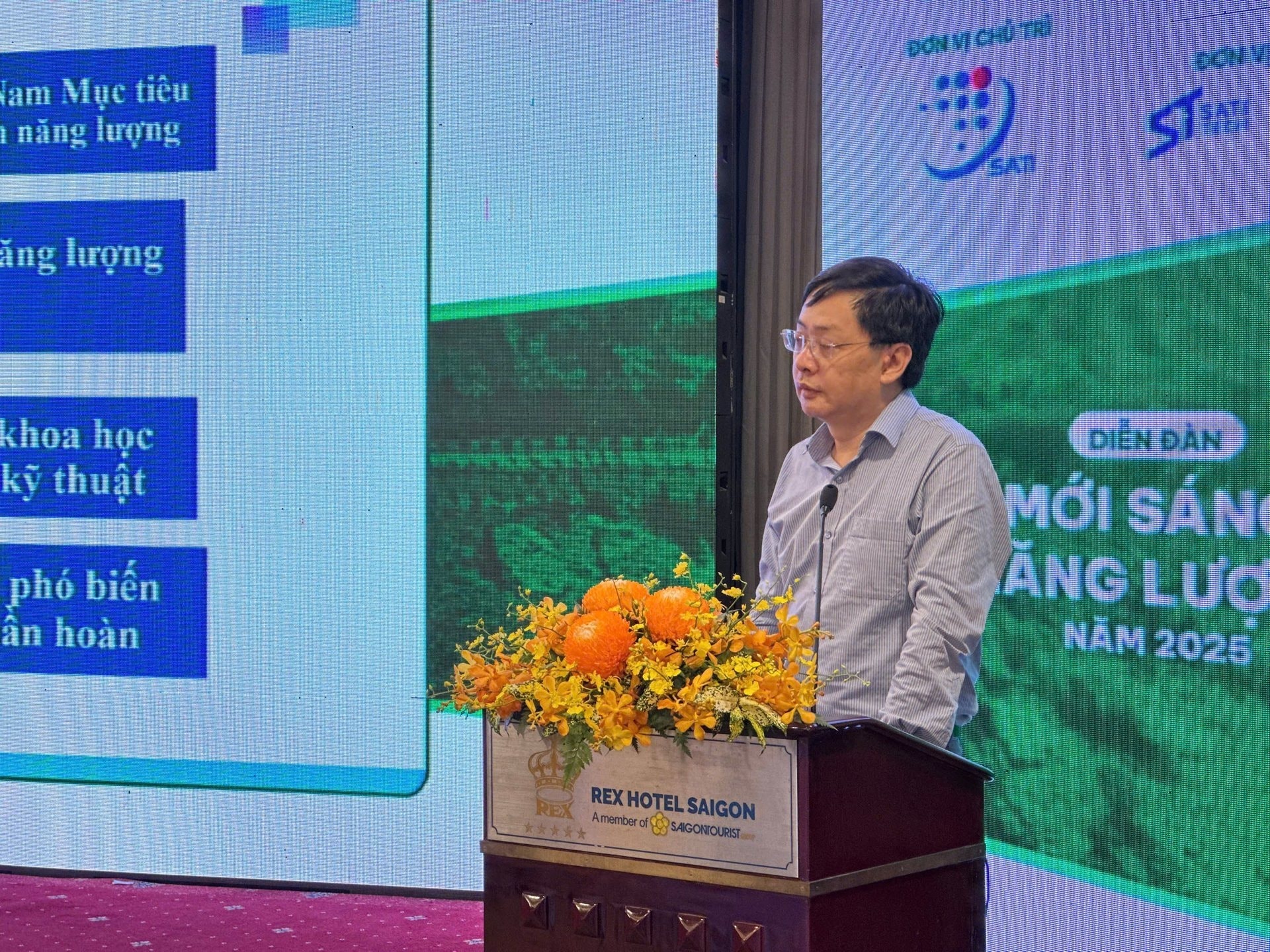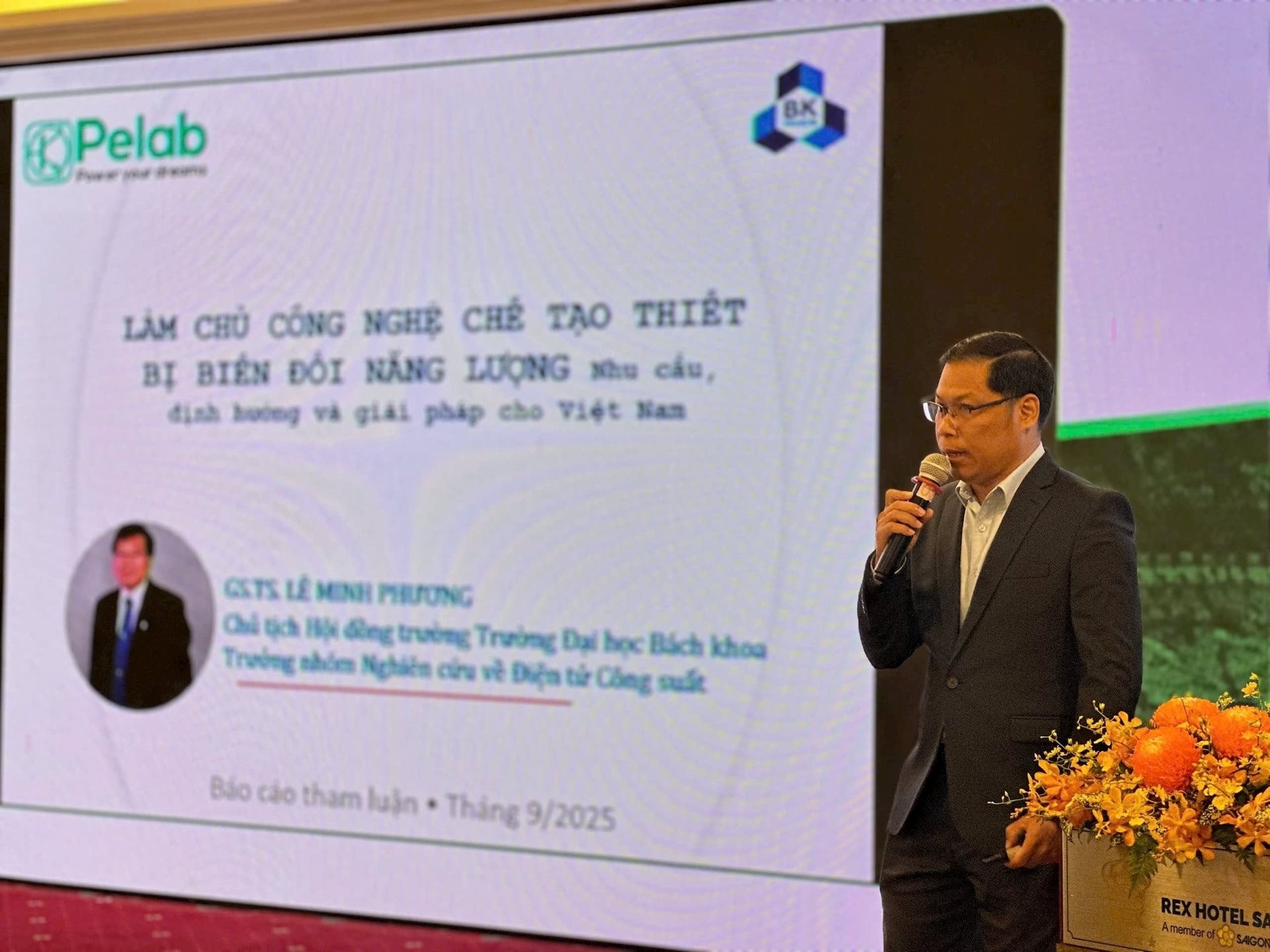Energy innovation to realize the net zero goal by 2050
The "Energy Innovation Forum 2025," organized by the State Agency for Technology and Innovation – SATI (under Ministry of Science and Technology) in collaboration with relevant units on September 18, 2025, emphasized the importance of innovation and digital transformation, promoting the application of clean technologies to realize the commitment to net-zero emissions by 2050.

Innovation is the driving force for sustainable energy transition
The forum took place in the context of the National Assembly recently passing the Law on Science, Technology, and Innovation; the Politburo issuing Resolution No. 70-NQ/TW on ensuring national energy security; along with the implementation of the National Energy Development Strategy to 2030, with a vision to 2045. These are important legal foundations and orientations, creating new momentum for the national energy transition process.
Speaking at the forum, Mr. Vo Tan Thanh, Vice Chairman of the Vietnam Chamber of Commerce and Industry (VCCI), stated that energy has long been considered the lifeblood of the economy, a prerequisite for ensuring national security, sustainable development, and improving quality of life. Currently, the world is undergoing a strong shift towards green growth models, circular economy, and carbon emission reduction. Therefore, issues in Vietnam's energy sector carry significant strategic and profound meaning.
Vietnam is striving to fulfill its commitments at COP26 with the goal of achieving net zero emissions by 2050. To achieve this goal, a fair and sustainable energy transition is considered an urgent requirement. However, the biggest challenge at present is the process of mobilizing financial resources, technology, as well as international cooperation in the context of intense global competition.
"Innovation in the energy sector is not only the task of the State but also the responsibility and opportunity of businesses," Mr. Vo Tan Thanh emphasized.
Mr. Pham Viet Hong, Deputy Director of SATI, Ministry of Science and Technology, also noted that Resolution No. 70-NQ/TW on ensuring national energy security and the National Energy Development Strategy to 2030, with a vision to 2045, are major orientations that create legal framework and new momentum for the country's energy transition and sustainable development process.
"In the face of the requirements to both ensure energy security and reduce greenhouse gas emissions to fulfill the 'net zero' commitment by 2050, Vietnam needs to more strongly leverage science, technology, and innovation, combined with industrial development policies and financial policies. These are important factors to promote the green, clean, and sustainable energy transition process," Mr. Pham Viet Hong affirmed.
Identifying some groups of strategic equipment products
Mr. Dang Hai Dung, Deputy Director General of the Agency for Innovation, Green Transition, and Industrial Promotion - IGIP, Ministry of Industry and Trade, stated that Vietnam's population is projected to reach 102 million by 2025, leading to an increasing demand for energy. In the period 2001-2010, electricity demand increased by 13% per year, and in 2011-2015, it increased by about 11% per year.
Current primary energy sources are insufficient to meet demand, causing Vietnam to import coal for power generation and liquefied petroleum gas (LPG) since 2023.

In light of this reality, according to Mr. Dang Hai Dung, implementing Resolution 70 needs to be based on four pillars:
First, economical and efficient use of energy, which is the foundation and the most important "demand-side" solution.
Second, scientific research and technology development, which are the driving force for innovation and optimization of the entire system.
Third, environmental protection and climate change response, demonstrating the commitment to green and sustainable development.
Fourth, circular economy model implementation, aiming to optimize resource use throughout the energy value chain.
In addition, the energy savings rate must reach 8-10% compared to the usual development scenario for supply-demand and renewable energy. This is an important indicator, reflecting the efficiency of the economy, and in particular, renewable energy will account for 25-30% of the total primary energy supply, affirming Vietnam's strong energy transition trend.
From a technological perspective, Prof. Dr. Le Minh Phuong, Chairman of the Council of Ho Chi Minh City University of Technology, stated that by the end of 2023, Vietnam had installed over 20 GW of solar power and 5 GW of wind power, with a growth rate among the highest in the region. However, more than 90% of key equipment such as inverters, electric vehicle chargers, or energy storage systems still have to be imported. This leaves Vietnam facing risks of technology dependence and missing opportunities for domestic industrial development.

According to the plan, the Government aims for electric vehicles to account for 30% of new car sales by 2030, requiring tens of thousands of fast charging stations at 50-350 kW, while deploying super-fast charging (megawatt charging) for electric trucks and buses. Furthermore, EVN sets the goal that by 2030, 100% of the main transmission and distribution grids will be digitized, using smart management equipment.
Therefore, it is necessary to build a specialized national science and technology program on power electronics and energy conversion equipment, considering this as a "strategic core technology" similar to semiconductors, AI, or nuclear energy in advanced countries.
In addition, apply a sandbox mechanism for testing new products (hybrid inverters, EV charging stations, BESS), helping businesses quickly commercialize technology without legal barriers. At the same time, have special preferential policies such as tax exemptions or reductions on imported R&D components, preferential credit for equipment manufacturing projects, deduction of research costs from corporate income tax; identify some product groups (high-power inverters, fast charging stations, storage systems) as strategic equipment, prioritizing support for localization to avoid complete dependence on foreign countries.
Furthermore, promote patent registration and useful solutions, especially in fields such as power circuit topology, intelligent control algorithms, SiC/GaN module design, BESS management systems, charging station management software; apply digital platforms (digital twin, IoT, AI) to support research, virtual testing, shortening R&D time.
Train power electronics engineers and power chip design experts, combined with master's and doctoral training in renewable energy, storage, and control systems. Build international joint training programs with leading countries in semiconductors and power electronics (Japan, South Korea, China), while implementing a "two-way expert exchange" mechanism.
In particular, to master the technology for manufacturing energy conversion equipment, there needs to be synchronous coordination between the State - Scientists - Businesses based on political orientations, and implementing Resolution 57-NQ/TW of the Politburo on developing science, technology, and innovation. The "Triple Helix" model, under the guidance and leadership of Resolution 57, will create clear division of responsibility and tight close linkages: The State creates policies - Scientists develop technology - Businesses commercialize products./.

